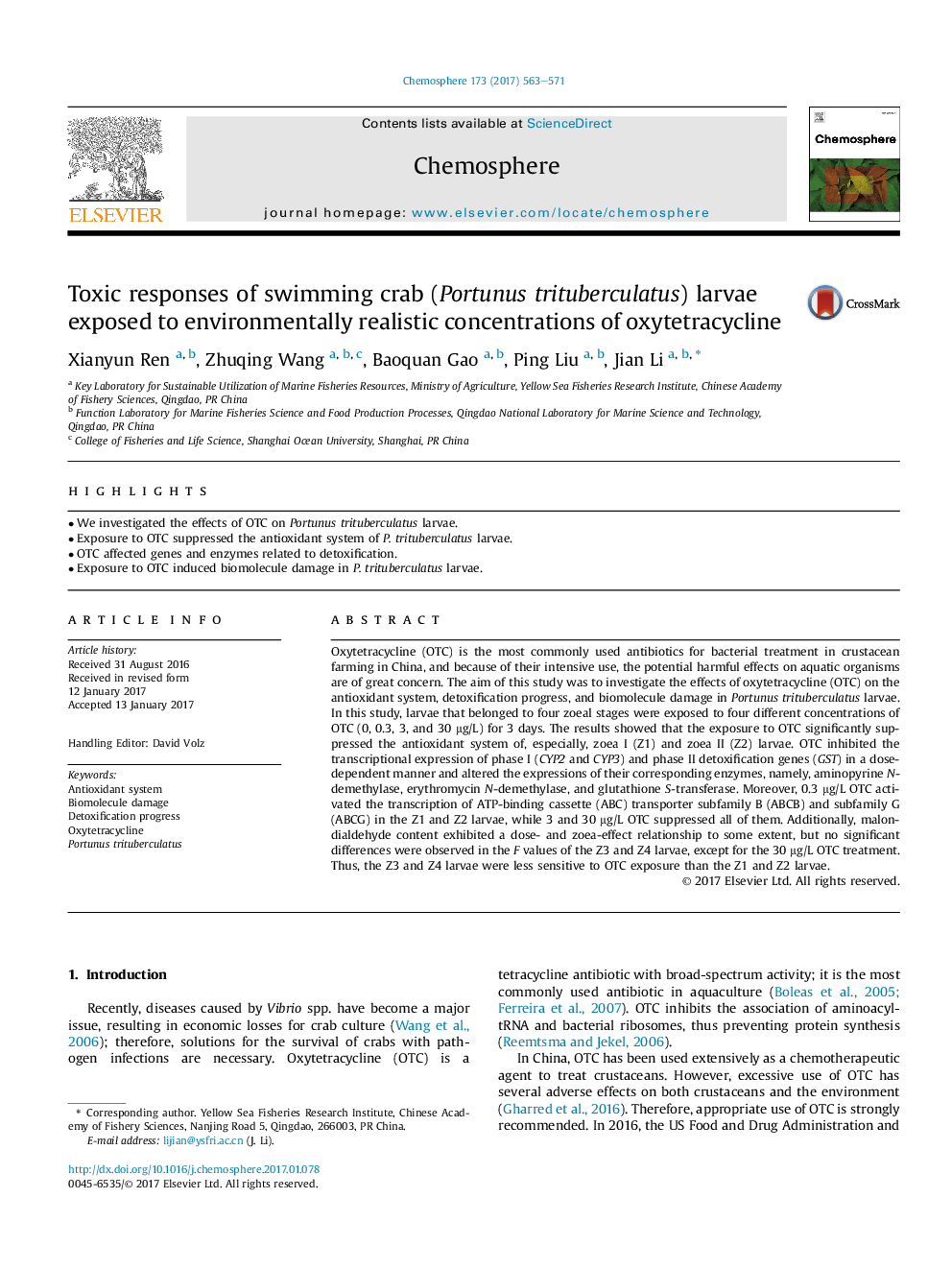| Article ID | Journal | Published Year | Pages | File Type |
|---|---|---|---|---|
| 5747414 | Chemosphere | 2017 | 9 Pages |
â¢We investigated the effects of OTC on Portunus trituberculatus larvae.â¢Exposure to OTC suppressed the antioxidant system of P. trituberculatus larvae.â¢OTC affected genes and enzymes related to detoxification.â¢Exposure to OTC induced biomolecule damage in P. trituberculatus larvae.
Oxytetracycline (OTC) is the most commonly used antibiotics for bacterial treatment in crustacean farming in China, and because of their intensive use, the potential harmful effects on aquatic organisms are of great concern. The aim of this study was to investigate the effects of oxytetracycline (OTC) on the antioxidant system, detoxification progress, and biomolecule damage in Portunus trituberculatus larvae. In this study, larvae that belonged to four zoeal stages were exposed to four different concentrations of OTC (0, 0.3, 3, and 30 μg/L) for 3 days. The results showed that the exposure to OTC significantly suppressed the antioxidant system of, especially, zoea I (Z1) and zoea II (Z2) larvae. OTC inhibited the transcriptional expression of phase I (CYP2 and CYP3) and phase II detoxification genes (GST) in a dose-dependent manner and altered the expressions of their corresponding enzymes, namely, aminopyrine N-demethylase, erythromycin N-demethylase, and glutathione S-transferase. Moreover, 0.3 μg/L OTC activated the transcription of ATP-binding cassette (ABC) transporter subfamily B (ABCB) and subfamily G (ABCG) in the Z1 and Z2 larvae, while 3 and 30 μg/L OTC suppressed all of them. Additionally, malondialdehyde content exhibited a dose- and zoea-effect relationship to some extent, but no significant differences were observed in the F values of the Z3 and Z4 larvae, except for the 30 μg/L OTC treatment. Thus, the Z3 and Z4 larvae were less sensitive to OTC exposure than the Z1 and Z2 larvae.
